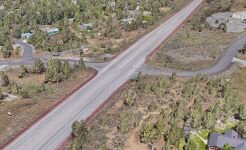
College of Engineering Unit:
The Oregon Department of Transportation (ODOT) has tasked team OBR5 with analyzing and offering recommendations for improvements to the intersection of Hwy 20 and Old Bend-Redmond Hwy. They have presented needs that should be addressed in the proposed design. Firstly, there are sections of the road where the pavement is deteriorating which results in rutting. Secondly, large queues are accumulating at the intersection during peak traffic hours. ODOT has also requested that the overall safety of the intersection be improved as the number of accidents at this intersection is high. The final request that the client has made is to construct a multi-modal path for pedestrians and bicyclists.
To ensure that the recommendation put forward is professional and accurate, there are multiple disciplines involved in the design process. Transportation engineers analyze current and expected future traffic patterns. They use these analyses to determine the best design alternative for the intersection. They are also responsible for determining the safety aspects of each alternative. Water resource engineers perform a watershed analysis and determine what kind of wastewater removal system to utilize for the conditions. A geotechnical engineer did a soil analysis and ensured that the native soils are strong enough to withstand the proposed improvements. They then design ways to strengthen the soil if determined to be too weak. With the soil information, they also do pavement design for whichever alternative is chosen.
Overall, the proposed design meets all specifications that ODOT requested. The selected design alternative consists of a two lane roundabout. This alternative includes the following features. A new pavement plan that replaces the existing deteriorated pavement. The roundabout increases traffic flow efficiency and reduces the development of queues. In addition, geometric features of the roundabout such as successive curves result in a safer intersection for drivers. Finally, with the implementation of multimodal paths, and pedestrian safety islands, the intersection is safer for pedestrians and bicyclists.